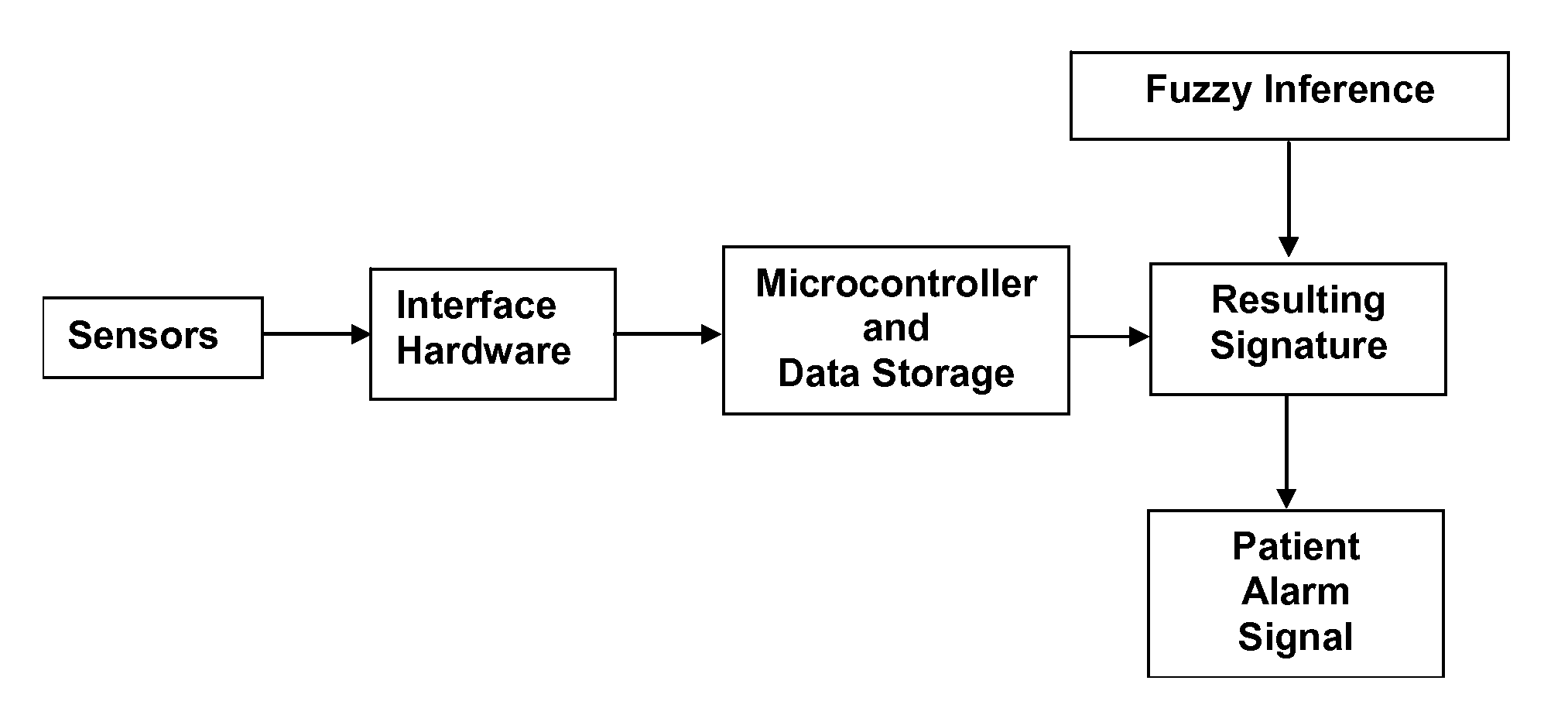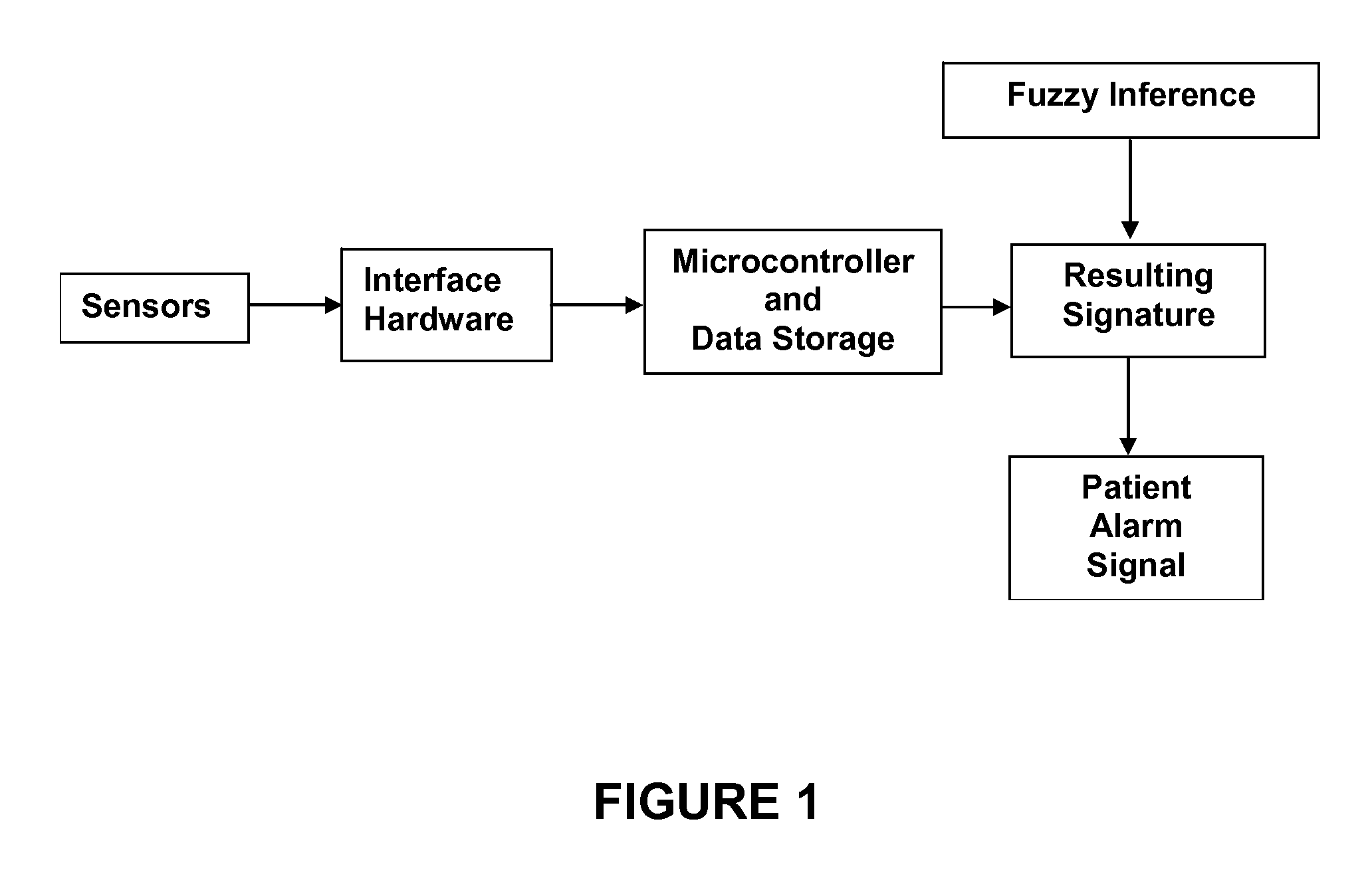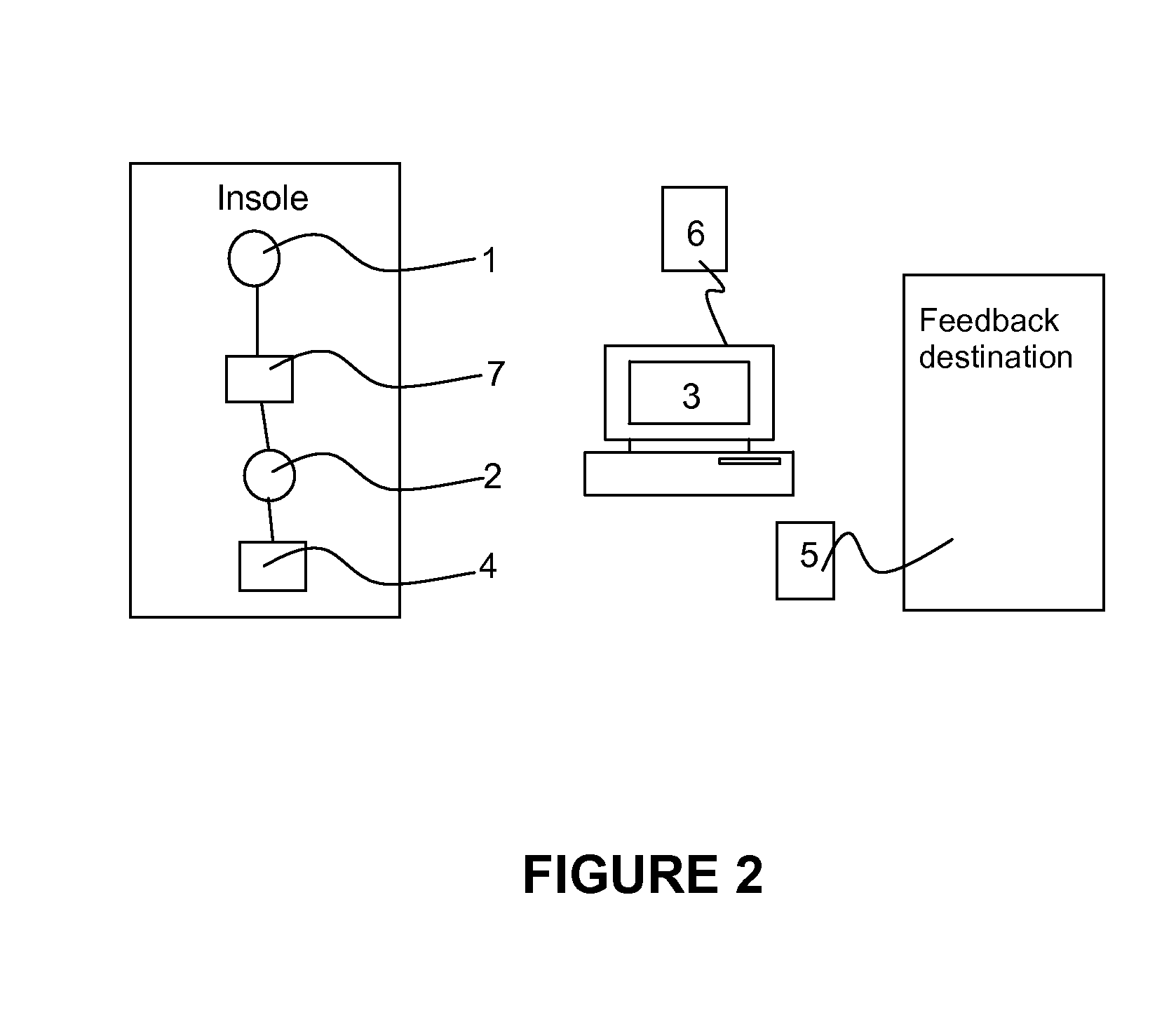Smart apparatus for gait monitoring and fall prevention
a technology of smart equipment and gait, applied in the field of smart equipment for gait monitoring and fall prevention, can solve the problems of serious injury, skin, bone and muscle injuries that do not fully account for the decline in mobility observed, and the stability of older adults is weakened, so as to improve stability and coordination, reduce the risk of falling, and improve the effect of mobility
- Summary
- Abstract
- Description
- Claims
- Application Information
AI Technical Summary
Problems solved by technology
Method used
Image
Examples
Embodiment Construction
[0040]The following description contains non-limiting examples which are intended to further illustrate some embodiments of the invention.
[0041]This invention augments the patient's diminished natural sensory feedback system, and provides information to the patient on their current stability situation such as stable [green], therapeutic [yellow] and danger [red] zones. Stability information allows individuals to assess their own performance and regain confidence in their ability to remain upright after a perturbation. By intentionally moving oneself into the therapeutic zone of instability, a patient can use this system to perform their own strength and coordination building physical therapy. Embedding this technology into existing physical therapy programs monitored and designed by rehabilitation specialists, patients gain access to individualized, interactive physical therapy programs on-demand, 24 hours a day, thus extending the period of active therapy and reducing the time to a...
PUM
 Login to View More
Login to View More Abstract
Description
Claims
Application Information
 Login to View More
Login to View More - R&D
- Intellectual Property
- Life Sciences
- Materials
- Tech Scout
- Unparalleled Data Quality
- Higher Quality Content
- 60% Fewer Hallucinations
Browse by: Latest US Patents, China's latest patents, Technical Efficacy Thesaurus, Application Domain, Technology Topic, Popular Technical Reports.
© 2025 PatSnap. All rights reserved.Legal|Privacy policy|Modern Slavery Act Transparency Statement|Sitemap|About US| Contact US: help@patsnap.com



